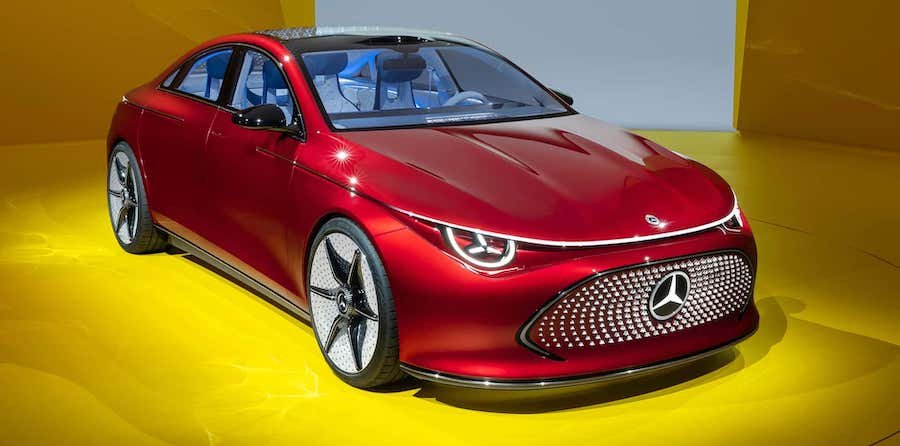Mercedes Isn't Retreating From China. Its Doubling Down

Nearly $2 Billion will go into China. $1.4 billion for passenger cars, and $550 million for commercial EV vans. Mercedes-Benz wants China-specific market localizations to strengthen its sales, like locally-made long-wheelbase versions of the forthcoming CLA sedan. These are meant to fend off competition from China's homegrown EV startups.
Like Volvo, Volkswagen, GM and Ford, Mercedes-Benz has openly walked back its EV future plans. The lozenge-shaped EQ cars are as good as dead, as is the MB.EA EV-specific architecture originally planned to replace the EQE and EQS when they reached the end of their model cycles. Still, despite all that grim news about Mercedes-Benz’s EV future, there are reports coming out of China that Mercedes-Benz is still putting a lot more money into making EVs work, at least in China. Mercedes-Benz is expected to put more than $2 Billion of investment in China to fight against China’s homegrown EV startups like Xpeng, Li Auto and Zeekr, according to local sources like CarNewsChina and CNEVPost.
The $2 billion is cut in two ways: $1.4 billion will reportedly go toward passenger vehicle operations, while the remaining $550 million will be put into Mercedes' commercial vehicle operations. The cars themselves will be produced by Mercedes-Benz’s existing joint venture operations with BAIC (passenger vehicles), and Fujian Benz (commercial vehicles), with the first fruits of the investment coming off production lines next year.
The first full EV will be the localized version of the electric CLA class. We already know that the new CLA will be based on the new MMA platform, but China’s version will be a localized long-wheelbase version explicitly for that market.
Most of Mercedes-Benz’s push and hope for its future is based on its ability to craft localized products that are compelling to Chinese buyers. It plans on introducing a specially crafted (ICE-powered) long-wheelbase GLE SUV just for China, as well as a luxury EV MPV meant to do battle with options from Zeekr, Voyah and Buick. This VAN.EA platform is expected to underpin all of Mercedes-Benz’s future EV van commercial vehicles and be made by its Chinese JV partner, Fujian Benz.
This is uncharted waters for most brands, especially luxury ones like Mercedes-Benz. For a long time, “BBA”, also known as Benz-BMW-Audi, had been somewhat insulated from China’s market changes, still turning consistent sales and strong profits. Now, that’s not the case. As China’s market continues to shift to full electrification, Mercedes-Benz’s EV efforts have not resonated with Chinese buyers while its ICE offerings continue to lose relevance. Volkswagen CEO Oliver Blume said it best; “There are no more cheques coming from China,” alluding to Western automakers' falling profits in China.
It seems like so many Western brands are at a crossroads in China. Are they to continue to invest and hope it pays off? Or do they cut and run? Mercedes-Benz isn’t the only German brand to invest even deeper in China. Volkswagen’s partnership with Xpeng is designed to right the ship and get the brand back on course in the country.
But these deeper partnerships don’t always work. Mitsubishi once was a prominent supplier of engines in many Chinese ICE cars during the 1990s and 2000s, but its lackluster ICE products never resonated all that deeply with Chinese consumers. When the market shifted to EVs and PHEVs, it tried its hand at selling reworked GAC motor products (the Eupheme EV/PHEV and Airtrek), but it wasn’t enough to boost the brand’s lagging sales. Mitsubishi stopped producing cars in China in late 2023, effectively ending its nearly 30-year run in the country.
Will Mercedes-Benz’s investment pay off? We’ll just have to wait and see.
Related News
